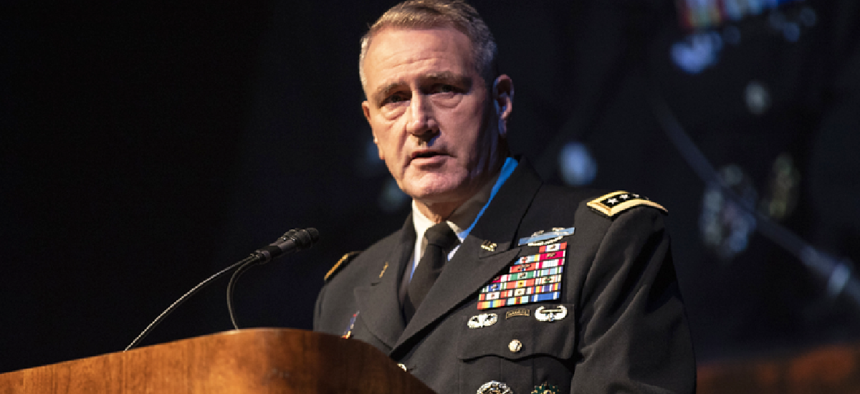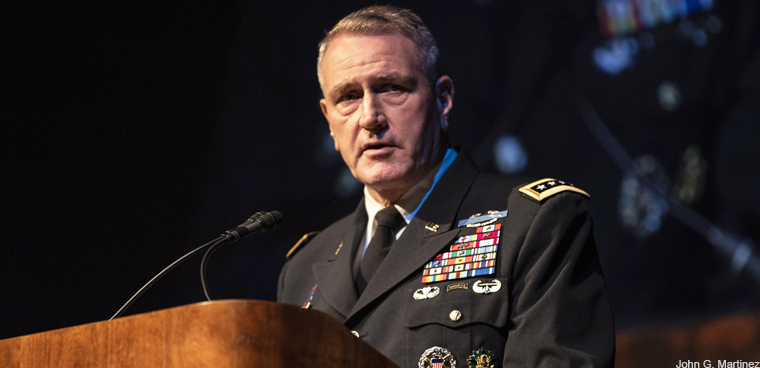Army tests the limits of its integrated tactical network

The Army's Project Convergence exercise has put the Integrated Tactical Network to the test. But holes in its availability prove there's work to be done.

John M. Murray, Army Futures Command commanding general, speaking at the Association of the U.S. Army's Global Force Symposium in Huntsville, Ala., in 2019.
The Army doesn't have the battlefield network it needs but it's learning just how far it can push the one it has.
An Army experiment, Project Convergence at Yuma Proving Ground, pusehd the limits of the Integrated Tactical Network, which primarily uses mobile components and has been developed and tested by the Army Futures Command's Network Cross Functional Team.
Brig. Gen. Ross Coffman, Army Futures Command's (AFC) Next Generation Combat Vehicle Cross-Functional Team, the network didn't perform in part because it wasn't ruggedized for the environment.
"We started with a network that we built from the ground up for this experiment," Coffman told reporters Sept. 23. "And what we learned is that it is not going to be sufficient to scale. We're going to have to go back and determine how we can talk ground to ground [systems] and air to ground [systems]and make sure we can scale the network."
The experiment, which has spanned several weeks starting in August, has served as a baseline for the Army's tactical network capabilities as the service attempts to replicate a warfighting environment that churns and refines data using automated, AI-enabled, systems and robotics among other technologies.
The experiment showcased many prototypes straight from the lab without being ruggedized for hard use. Sometimes the right information was sent and a system hit its target, other times there was nothing.
The Army is hoping to use lessons learned from the experiment to build the tactical network it needs.
Gen. John Murray, AFC's commanding general told reporters Sept. 23 that the network "isn't a vulnerability, it's not the weak link, but it is the backbone of everything we're doing" and needed to be improved to be able to pass data to and from various systems.
"Just like everything else, we brought what we had," Murray said. "The network that showed up here at Yuma was basically the same network we're designing for a tactical brigade -- never designed to operate over these ranges, never designed to operate in a constrained bandwidth environment, although that's a piece of it. Our fundamental way forward for the network is to spin in commercial capabilities to continue to enrich and expand the network we have."
The Army began pivoting away from its legacy Warfighter Information Network-Tactical (WIN-T) in 2018 after investing billions of dollars, but the infrastructure is still incorporated into future network concepts, primarily the Integrated Tactical Network.
"You don't just throw everything away and start all over again. And by the same token here, how can you take what you have and continue to add to that from new technologies," Murray said.
"Now we know what the network has to do to support this, we'll go back to the drawing board and figure out exactly what type of network we need to build to do this."
For next year's experiment, which will incorporate testing capabilities and weapons systems from other military branches, Murray said his number one goal was to have a network that works on day one.
"I want to show up with a network that from day one we can begin to exercise," Murray said. "We've got to figure out do we have to lock down the configuration, we've got to figure out the final configuration that made it work, and then we've got to test this in the lab and in the dirt so we can show up on day one and we're not trying to cobble stuff together to make the network work."
NEXT STORY: A call for visionary investment



